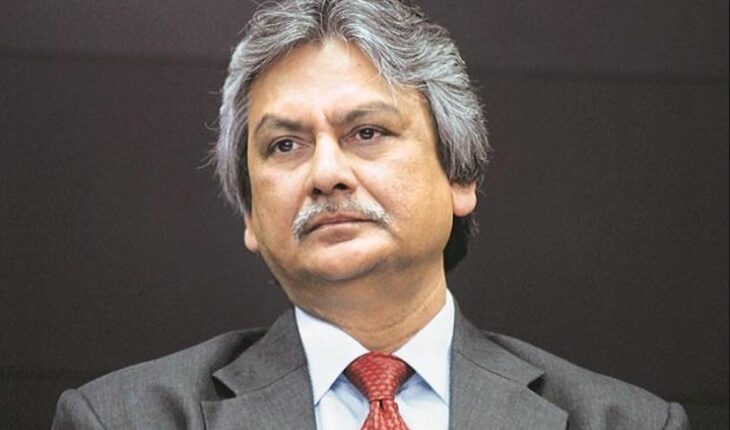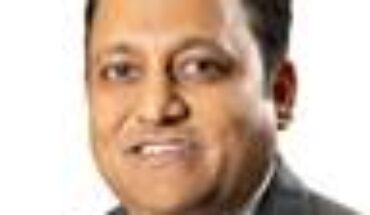NEW DELHI: It may take years for India’s GDP to regain lost output due to the coronavirus pandemic, according to Michael Patra, an RBI monetary policy committee member.
“If the projections hold, the level of GDP would have fallen approximately 6 per cent below its pre-COVID level by the end of 2020-21 and it may take years to regain this lost output. There is also an anecdotal sense that the economy’s potential output has fallen, and the post-COVID growth trajectory will look very different from what has been recorded so far. Changes in social behaviour and norms of commercial and workplace engagements may accentuate this structural change,” said Patra.
Maintaining status quo for the second time in a row, Reserve Bank of India had decided to keep benchmark interest rate unchanged at 4 per cent but maintained an accommodative stance, implying more rate cuts in the future if the need arises to support the economy hit by the COVID-19 crisis.
“The COVID curve is arching inwards, from the cities where infections had hitherto festered, into interior regions. The fear of a second wave looms over India; already it has forced lockdowns across Europe, Israel and Indonesia, and India, with the second highest caseload of infections and over-stretched healthcare infrastructure, cannot be immune. In the absence of intrinsic drivers, the recovery may last only until pent-up demand has been satiated and replenishment of inventories has been completed. Empirical evidence suggests that consumption-led recoveries are shallow and short-lived. Exports could be a driver, but with the WTO’s latest projection of a decline in world trade volume by 9.2 per cent in 2020, the role of exports in powering a durable revival is likely to be circumscribed,” Patra further said at the MPC meeting.
Structural reforms to unlock growth impulses are needed, but may lack social traction in an atmosphere of depressed growth and employment, and high uncertainty, said Patra in his prognosis of the economy.
“In the current milieu, however, both monetary policy and fiscal policy in India face tightening constraints, some idiosyncratic. For fiscal policy, it is the collapse of tax revenue – by 32 per cent in the first quarter; consequently, the centre’s revenue deficit during April-August is 121.9 per cent of budget estimates. For monetary policy, it is the persistence of headline inflation above 6 per cent for the third month in succession. Structural reforms to unlock growth impulses are needed, but may lack social traction in an atmosphere of depressed growth and employment, and high uncertainty,” he said.
Jayanth R. Varma, another MPC member, said, “In a world that is full of unpleasant surprises, the MPC must of necessity be data driven. Covid-19 was an example of a totally unanticipated growth shock that came out of nowhere. If a similarly unforeseeable inflation shock were to hit the economy, I find it hard to believe that the MPC will remain accommodative.”
“I believe that excessively high long term rates are inflicting damage to the economy in two ways. First, a significant part of the easing of policy rates is not being transmitted to longer term rates that form the benchmark for corporate borrowing and investment decisions. Excessive long term rates exacerbate the collapse of investments in the economy. Second, high long term rates cause an appreciation of the real effective exchange rate by stimulating foreign capital inflows into our bond markets at a time when the collapse of investment has caused the current account to swing into surplus,” Varma
added.AGENCIES
“If the projections hold, the level of GDP would have fallen approximately 6 per cent below its pre-COVID level by the end of 2020-21 and it may take years to regain this lost output. There is also an anecdotal sense that the economy’s potential output has fallen, and the post-COVID growth trajectory will look very different from what has been recorded so far. Changes in social behaviour and norms of commercial and workplace engagements may accentuate this structural change,” said Patra.
Maintaining status quo for the second time in a row, Reserve Bank of India had decided to keep benchmark interest rate unchanged at 4 per cent but maintained an accommodative stance, implying more rate cuts in the future if the need arises to support the economy hit by the COVID-19 crisis.
“The COVID curve is arching inwards, from the cities where infections had hitherto festered, into interior regions. The fear of a second wave looms over India; already it has forced lockdowns across Europe, Israel and Indonesia, and India, with the second highest caseload of infections and over-stretched healthcare infrastructure, cannot be immune. In the absence of intrinsic drivers, the recovery may last only until pent-up demand has been satiated and replenishment of inventories has been completed. Empirical evidence suggests that consumption-led recoveries are shallow and short-lived. Exports could be a driver, but with the WTO’s latest projection of a decline in world trade volume by 9.2 per cent in 2020, the role of exports in powering a durable revival is likely to be circumscribed,” Patra further said at the MPC meeting.
Structural reforms to unlock growth impulses are needed, but may lack social traction in an atmosphere of depressed growth and employment, and high uncertainty, said Patra in his prognosis of the economy.
“In the current milieu, however, both monetary policy and fiscal policy in India face tightening constraints, some idiosyncratic. For fiscal policy, it is the collapse of tax revenue – by 32 per cent in the first quarter; consequently, the centre’s revenue deficit during April-August is 121.9 per cent of budget estimates. For monetary policy, it is the persistence of headline inflation above 6 per cent for the third month in succession. Structural reforms to unlock growth impulses are needed, but may lack social traction in an atmosphere of depressed growth and employment, and high uncertainty,” he said.
Jayanth R. Varma, another MPC member, said, “In a world that is full of unpleasant surprises, the MPC must of necessity be data driven. Covid-19 was an example of a totally unanticipated growth shock that came out of nowhere. If a similarly unforeseeable inflation shock were to hit the economy, I find it hard to believe that the MPC will remain accommodative.”
“I believe that excessively high long term rates are inflicting damage to the economy in two ways. First, a significant part of the easing of policy rates is not being transmitted to longer term rates that form the benchmark for corporate borrowing and investment decisions. Excessive long term rates exacerbate the collapse of investments in the economy. Second, high long term rates cause an appreciation of the real effective exchange rate by stimulating foreign capital inflows into our bond markets at a time when the collapse of investment has caused the current account to swing into surplus,” Varma
added.AGENCIES





